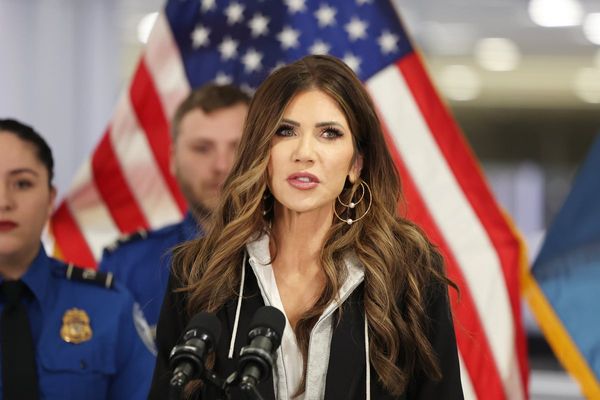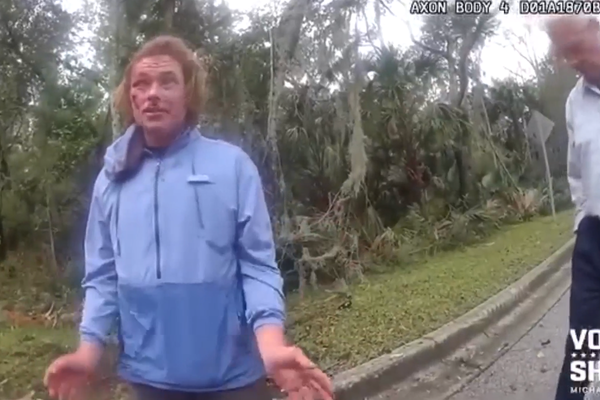
In just a few days the voice referendum will be held and there will be an answer to the question the nation has been asked: should there be an Indigenous voice to the parliament enshrined in the constitution?
It has been, by any measure, a brutal campaign. But it’s clear the no camp has relied in some measure on misinformation and fear of the unknown to sway voters to their side, with the same debunked claims popping up time and time again.
(The Blak sovereign no campaign, it should be noted, is separate to the main no camp and has not endorsed these arguments. The progressive no case, as it is called, is based in concerns about sovereignty, taking part in a white person’s process, the lack of power the voice holds and the desire to progress truth telling and treaty ahead of the voice.)
If you are just tuning in to the referendum, here are seven of the biggest bits of misinformation being pushed by some no campaigners.
1. Australians will lose ownership of homes
Variations of this claim include: Australians will be forced to pay reparations or the voice will increase taxes (ie, the voice will cost you money)
The voice has no power to raise taxes; it is an advisory body only. Not even the Senate can raise taxes without the House of Representative’s approval – the government is in charge of taxation and there is nothing in the voice that would alter that.
There is no mention of reparations in the Uluru statement from the heart and the prime minister has taken the additional step of ruling them out. The voice can only advise the parliament on policy: it cannot create legislation or veto parliamentary decisions.
As for the enduring claim of Indigenous people coming for your home and property – that is a fear campaign which has been spread for decades. In 1996 the then opposition leader, John Howard, appeared on ABC’s 7.30 with a map claiming 80% of Australia was under threat from native title claims because of the Mabo and Wik court decisions. But no one lost their home as a result of those decisions.
There is no way for the voice to change home ownership in Australia.
2. The voice is legally risky
Variations of this include claims that the voice is a third chamber of parliament, will dictate laws to the government, or will destabilise democracy
These furphies all rely on people not having an understanding of how parliament, legislation and the high court work.
The voice can not dictate laws to the government. It does not have a veto power. It can not submit legislation to the parliament, override a parliament decision, vote on legislation or hold up legislation. The parliament remains in charge of its own destiny, meaning the parliament can choose to ignore any and all advice from the voice.
The government lays out its legislative agenda and the parliament can agree to it, amend it, or vote it down, as well as delay bills to allow further consultation (the latest suite of industrial relations changes is an example of that – the Senate has voted to delay it until February next year to allow further scrutiny).
Constitutional law experts are largely in agreement that there is nothing in the voice’s addition to the constitution which would lead to legal risk. The solicitor general, who provides advice to the government on the potential legal risk of legislation or policy, has advised the inclusion would be sound. People can bring challenges to the high court on any constitutional question but it is the high court that decides whether or not to hear those challenges. There is nothing in the voice to suggest it would open up the constitutional flood gates.
3. The voice will divide the nation
There is nothing in the voice which would divide the nation. The parliament receives advice from all sorts of bodies: lobby groups, advocates, thinktanks, academics, inquiries and interest groups.
Most legislation goes through an open consultation process where anyone can submit their thoughts on a piece of policy direct to the committee examining it. None of this is new or unique. The only difference is that the Indigenous advisory body would be in the constitution so future governments could not abolish it – as they have every other advisory group from The Aboriginal and Torres Strait Islander Commission onwards.
4. The voice will force treaties
Truth telling and treaty is a part of the Uluru statement from the heart but it is a completely separate process to the voice. Some states, including Queensland and Victoria, are progressing both truth telling and treaty, but again, that is separate to the voice.
The leading no campaigner Warren Mundine has said that a no vote will lead to treaty, while a fellow no advocate, Senator Jacinta Price, has said a yes vote would lead to treaty. There is no evidence for either, as the federal government has not indicated it will be engaging in those processes no matter what the outcome of the vote is.
The voice can not force a treaty as it has no power over the parliament.
5. There are no details
Variations of this claim include: you don’t know what you’re voting for and the voice is a Trojan horse for ‘secret agendas’
There is plenty of detail. None of it is set in stone, because that is the parliament’s job, but we have an in-principle guide of what the voice under this government (because legislation can always be changed) would look like.
There’s the eight design principles agreed by the government, including that voice membership would be chosen by Indigenous people in a way that suits local communities; would be representative of geography and gender; would have representatives from each state and territory, the Torres Strait Islands, remote areas and the mainland Torres Strait Islander population; and wouldn’t run any programs or have veto power.
Separately, there’s also the Calma-Langton co-design report, which the government hasn’t officially endorsed but has been regularly held up as an example. That report suggests 35 local voices representing different areas around the country. Those local voices, which would include regional and rural communities, would also work with local, state and federal governments. Aboriginal and Torres Strait Islanders would elect the members of a national voice, which would have 24 members: two from each state and territory (16), five from remote communities, two from the Torres Strait, one representing Torres Strait Islanders living on the mainland.
The national voice would be gender-balanced; those elected would serve four-year terms but can only serve two terms maximum. The two full-time co-chairs of the national voice would be elected by the national voice members themselves.
The voice would advise on policy that had a direct impact on Indigenous people.
The “Trojan horse” and “secret agenda” conspiracies are partially based on “secret documents” that some no campaigners say the yes camp is trying to hide – despite those documents being freely available for years.
There were years and years of meetings before the Uluru statement. Those meetings had minutes, which included early ideas of what the hundreds of people consulting on the statement wanted it to include. After the final meeting, the Uluru statement was delivered – just over 440 words long, with three requests; an Indigenous voice in the constitution, treaty and truth telling. Each is a separate process.
6. The voice will allow the UN to take over Australia
Sadly, this is one of the claims has taken over social media, despite having no basis in fact or reality. There is no way for the United Nations to “take over” Australia. The UN is a global forum where countries work towards peace and security across the globe. It doesn’t have its own military force. For the UN to act, its member countries have to agree. But there is no way for the UN to take over a country.
This particular conspiracy gained some steam during the pandemic and has lingered ever since. A selectively edited video of Anthony Albanese laying out some of the conspiracies he had heard – including that “the UN would come and take your house” – took off on Facebook after it was shared by a former conservative member of the Queensland parliament. There is no basis in fact to this, at all.
Nor is there any prospect of the voice being used to destabilise the government, leading to a crossbencher being made prime minister, who would then give the voice all the powers it wanted. This too has been floated on social media, but again, there is no chance, or even feasible way, of this happening.
7. The Australian Electoral Commission will tamper with your votes
This is another example of Trumpian-style politics seeping into Australia. The opposition leader, Peter Dutton, attacked the AEC after the commissioner, Tom Rogers, rightly explained that under the law ballots with ticks on them could be considered a yes vote but crosses would be informal – although in the same breath, he asked people to write yes or no. That has been the law for the last six referendums; there is no conspiracy or change here. Clive Palmer’s legal attempts to have crosses counted in this last week failed because there is no issue for the courts to decide on.
The no camp has – without any evidence – claimed that the AEC could declare 5% of votes as invalid. The AEC said in the 1999 referendum, only 0.86% of votes were classed as informal, and only a portion of those related to ticks and crosses on the ballot. There have also been reports of no campaigners telling people to bring a pen into the ballot box with them to stop AEC workers from changing their votes.
There is no evidence of voter fraud in Australia. To vote, you have to be able to provide your name and registered address; voting more than once is illegal. Voter fraud (people voting more than once) is negligible and has never altered the margin. At the 2019 election there were only 0.03% instances of people voting more than once.
The vote count is scrutinised (meaning people from both camps watch the vote count as it happens) and the AEC’s only job is upholding the law. It does not have skin in the game when it comes to the actual vote.
Rogers said there was more tension around this vote but a lot of the conspiracy theories remained the same: “This thing about pens and pencils and a range of other conspiracy theories, frankly, it’s like conspiracy theory bingo at every election. You tick it off as it occurs.
“I can assure everyone that votes are treated with the utmost respect. We treat them like a democratic blank check that we cash on behalf of all Australians. There are scrutineers there whenever votes are being handled.
“If anyone thinks we’ve got time to do that with something like over 17 million electors, frankly, come and work for us and you’ll see what happens. It’s just nonsense.”







